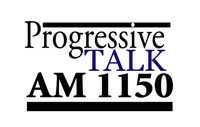Wednesday, January 24, 2007
Studies 'Proving' Universities Have a Liberal Bias — Are Biased
Inside Higher Ed reports that a new study applies the standards for academic research to studies looking for bias in university professors, and finds them lacking. Lacking in academic standards, that is, but chock-full of bias.
Lee’s analysis finds some support for the first theme. “Taken together, these studies at best suggest that college faculty members are more likely to be Democrats than Republicans,” he writes. However, even on this theme, he notes that the studies tend to exclude community college faculty members and to focus on faculty at elite institutions — probably skewing the results. The second theme takes a more thorough beating in the study. “Among the most serious claims the authors make is that this liberal dominance results in systematic exclusion of conservative ideas, limited promotion opportunities for conservative faculty, and expression in the classroom of liberal perspectives that damage student leaning,” Lee writes. “These claims, however, are not supported by the research. Basic methodological flaws keep a critical reader from accepting the conclusions suggested by the authors.” The flaw Lee identifies most frequently with this theme is one in which researchers note a correlation and — in Lee’s opinion — then see a causal relationship without sufficient evidence that one exists. [...] Lee said that to test the validity of the studies, he wanted standards that could not be considered partisan, so he used a 2006 statement by the White House Office of Management and Budget about objectivity in research. Based on that statement, he asked five questions about each of the faculty bias studies: Can another researcher with a different perspective replicate the results using the information provided by the author? Are the definitions used in the studies clear enough? Does the research eliminate alternative explanations for the results? Do the conclusions follow logically from the evidence? Has the author guarded against assumptions that could introduce systematic bias into the study? Using this framework, Lee gives the studies failing grades. Four studies had data that could be replicated, and he gave three studies acceptable reviews on clarity of terms, but it was downhill from there, and he argues that none of the reports can truly back up their contentions.So why do these studies consistently discover a liberal bias in institutions of higher learning? Maybe it's because their purpose is not to ask whether there is bias, but to find it. The studies were commissioned or carried out by organizations such as the American Council of Trustees and Alumni, which has created a blacklist of professors it considers too liberal, in order to discourage the presentation of liberal viewpoints in academic settings. Projection: It's not just for movie theaters.
More blogs about politics.






